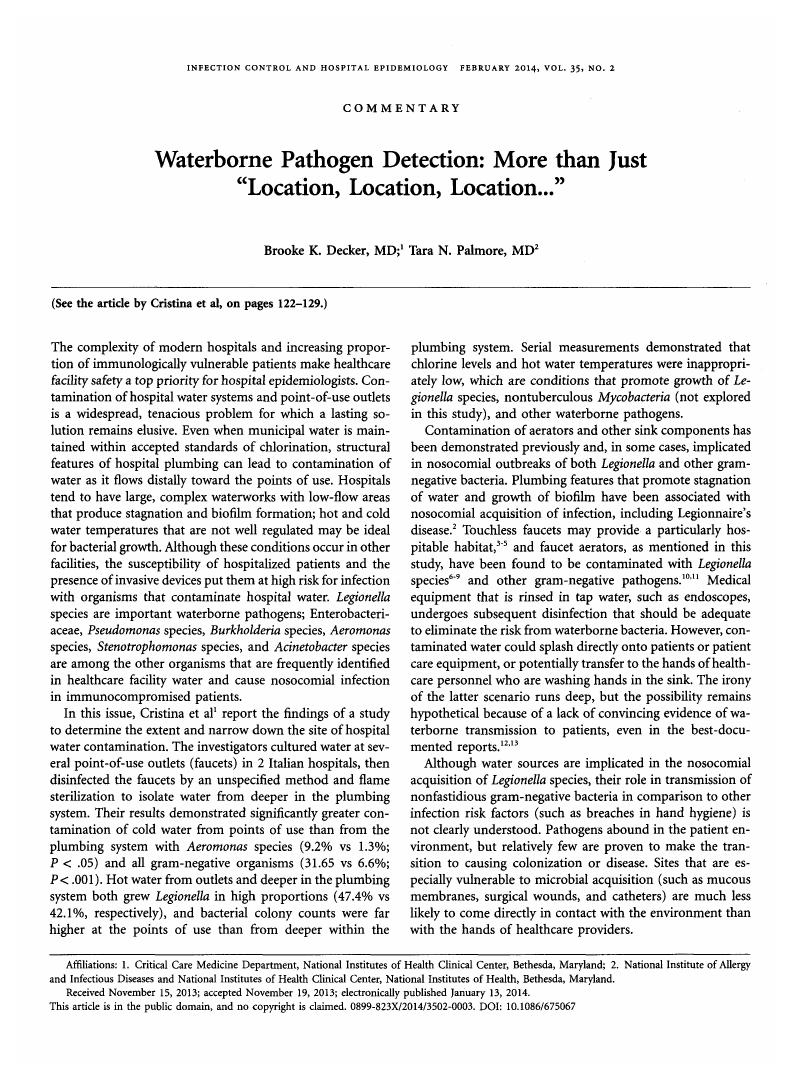Crossref Citations
This article has been cited by the following publications. This list is generated based on data provided by Crossref.
Minogue, Elizabeth
Tuite, Nina L
Smith, Cindy J
Reddington, Kate
and
Barry, Thomas
2015.
A rapid culture independent methodology to quantitatively detect and identify common human bacterial pathogens associated with contaminated high purity water.
BMC Biotechnology,
Vol. 15,
Issue. 1,
Petti, Stefano
2016.
The Chicken–Egg Dilemma: Legionnaires’ Disease and Retrograde Contamination of Dental Unit Waterlines.
Infection Control & Hospital Epidemiology,
Vol. 37,
Issue. 10,
p.
1258.
Yablon, Brian R.
Dantes, Raymund
Tsai, Victoria
Lim, Rachel
Moulton-Meissner, Heather
Arduino, Matthew
Jensen, Bette
Patel, Megan Toth
Vernon, Michael O.
Grant-Greene, Yoran
Christiansen, Demian
Conover, Craig
Kallen, Alexander
and
Guh, Alice Y.
2017.
Outbreak ofPantoea agglomeransBloodstream Infections at an Oncology Clinic—Illinois, 2012-2013.
Infection Control & Hospital Epidemiology,
Vol. 38,
Issue. 3,
p.
314.
Tran-Dinh, A.
Neulier, C.
Amara, M.
Nebot, N.
Troché, G.
Breton, N.
Zuber, B.
Cavelot, S.
Pangon, B.
Bedos, J.P.
Merrer, J.
and
Grimaldi, D.
2018.
Impact of intensive care unit relocation and role of tap water on an outbreak of Pseudomonas aeruginosa expressing OprD-mediated resistance to imipenem.
Journal of Hospital Infection,
Vol. 100,
Issue. 3,
p.
e105.
Gómez-Gómez, B.
Volkow-Fernández, P.
and
Cornejo-Juárez, P.
2020.
Bloodstream Infections Caused by Waterborne Bacteria.
Current Treatment Options in Infectious Diseases,
Vol. 12,
Issue. 3,
p.
332.



